I’ve been a devotee of Australian rock ‘n roll for a long time, ever since I picked up my first Midnight Oil and Church albums in my teens. There are a lot of parallels between my country and theirs, the population size, the ties to the Empire, the oppressed Aboriginal minority, the vast open spaces.
There’s just something special about the way you guys do it. Mind you, familiarity breeds contempt, and maybe that explains my lack of interest in Canadian tunes (except for Rush. If you diss Rush, I will likely punch you). Also perhaps due to the fact that I spent a lot of time in bands that should have gotten somewhere, and getting nowhere often had less to do with our lack of talent or effort than with the trend-oriented nature of Canadian tastes. Oh yes, it’s trendy here. And being the prime international innovators of indie rock is not exactly a feather in our caps. Let me qualify this by shouting out to all my talented musician homies. We shoulda made it. And no dissing of Bruce Cockburn, Gordon Lightfoot and other fine acts.
I mean, sure, we have some bands that have done well, such as Blue Rodeo, Sloan and The Tragically Hip, and they all have some good tunes, but for every one of our popular bands (except Rush) there’s an Aussie band that does it better. Unless you think The Arcade Fire is genius, and in that case … uh. And let me remind you that our biggest export is Nickelback, while Australia’s biggest band is Powderfinger. Need I say more?
This is by no means a definitive list of THE essential Aussie albums (I’d never be so presumptuous), but it IS a list of albums that every serious rock fan needs, spanning folk, muscular manly rock, pop and psychedelia. I should also point out that I have no idea how popular most of this music was down in the Antipodes, so you could say my perspectives are rather objective. If it went platinum or tin, don’t matter to me. If you are Australian, send this list to your non-Aussie friends so they can git an eddycation.
Read on. There are YouTube links too.
 The Church – After Everything Now This (2002)
The Church – After Everything Now This (2002)
I’ve given plenty of ink to Sydney’s global kings of neo-psych, who started up with the Of Skins and Heart album in 1981, with their wondrous chiming dual guitars and mind-blowing lyrics. Read this. This album is not their best-known by a long shot, but it represented a true return to top form by the band that does this kind of music better than any other. In any age. Several of the band’s best songs ever are on this, including the majestic melancholy of “After Everything“, the mystical magic of “Radiance“, the slippery nastiness of “Numbers“, and the list goes on. Singer Steve Kilbey is in great lyrical shape, spinning mystical verse like God’s own poet, and the guitar parts and textures devised by Marty Willson-Piper and Peter Koppes are out of this world. This band takes you to mental and spiritual places that no one else can. There’s SO much more to The Church than “Under the Milky Way”, as lovely as that song is.
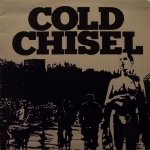 Cold Chisel – Cold Chisel (1978)
Cold Chisel – Cold Chisel (1978)
Cold Chisel was a very popular band in Australia, sort of the Powderfinger of their day. Their sound was a mixture of high-octane blues-rock with the AOR sound popular in the early eighties, though the lingering appeal of Cold Chisel lies in the fact that their sound was much rawer than the Loverboys and Foreigners of the period. With most vocals handled by leather-lunged Jimmy Barnes, sort of a more powerful Lou Gramm, the band’s hits were in the care of a good throat. A little slick but a little Springsteen too, Cold Chisel knew how to rock hard and how to write smart songs for the everyman without talking down to him. This first album is rightfully considered a classic and is the rawest of their albums, right out of the gates with the riffery of “Juliet“. The album also contains the landmark Aussie anthem “Khe Sanh“, about a vet’s problems upon his return from ‘Nam (yes, Aussies were there). The throbbing pulse of “Darskarzine” is another highlight. If you want the finest in high-octane rock ‘n roll, look no further.
 The Go-Betweens – Tallulah (1987)
The Go-Betweens – Tallulah (1987)
Brisbane’s Go-Betweens are often spoken of in terms of being “underappreciated”, which is true, but I’d say they’ve acquired their fair share of admirers over the years. Unfortunately, they will not be making more music, since one half of the songwriting duo, Grant McLennan, has tragically left this earth. But he left in his wake a ton of great albums. Tallulah is something of a transitional album, from the spartan post-punk sounds of earlier albums to a lush pop sensibility. But the band’s sharp and melodic songwriting remained intact. Both McLennan and Robert Forster present some of their best pop songs here, including McLennan’s pair of classics, “Right Here” and “Bye Bye Pride” (mega hits that should have been), as well as Forster’s taut, edgy rockers “You Tell Me” and “I Just Get Caught Out“. Other highlights include the ballad “The Clarke Sisters” and Forster’s “The House that Jack Kerouac Built”. These guys represent some of the pop world’s finest songwriting skills, with a warmth and intelligence rarely found. If you haven’t experienced it yet, do so!
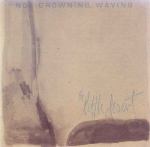 Not Drowning, Waving – The Little Desert (1985)
Not Drowning, Waving – The Little Desert (1985)
Melbourne’s Not Drowning, Waving was led by pianist/vocalist David Bridie. A pretty unique band, Not Drowning, Waving took the fusion of rock music, world music and ambient further than Talking Heads ever did. Indeed, the sound is a fusion of the better end of eighties pop with ambient sounds worthy of Harold Budd and Brian Eno. The Little Desert is their masterpiece, a collection of gentle songs and instrumentals replete with field recordings that evoke the wilderness and small towns of Australia. This is an album best digested as a seamless listening experience, but you’re hooked immediately by the elegant piano ballad “The Same Heat“, while “Empty Trees and Buildings”, “Tide” and “Big Sky” are examples of the excellent ambient pieces on the record. I do believe this is an album that every ambient music fan should own, but it’s also a very important recording in the history of Australian music, very much ahead of its time, and one of my favourite albums, period.
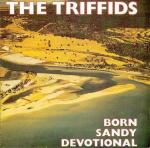 The Triffids – Born Sandy Devotional (1986)
The Triffids – Born Sandy Devotional (1986)
Perth’s Triffids were led by the late David McComb, a prodigiously talented and very focused songwriter. The band did not achieve the success it deserved but has a loyal cult following. Perhaps being from Western Australia is what lent McComb’s songwriting its widescreen, cinematic vibe. While the instrumentation is very much new wave with roots touches, the imagery is pastoral and rural, but not always in a pretty way, for often the songs are dark and tragic stories played out under the unforgivingly huge and empty skies of the bush. A more evocative lyricist would be hard to find. This, the band’s strongest album, features the all-time classic “Wide Open Road” with its simple but hard-hitting lyrics, but also the very dramatic “Stolen Property” and the moody “Lonely Stretch“. The Triffids are an example of a band that really couldn’t be from anywhere else, which is possibly why they did not find international success, but what a band it was.
This is maybe not Silverchair’s best, since it was followed by the quite spectacular Young Modern. But there’s something special about Diorama. And what that something is, is a major talent blossoming before our eyes. Daniel Johns, who got signed at what, 15? must have been doing some serious listening, because the adolescent band’s understandable reliance on derivative grunge (how good was YOUR band when you were 16?) mixed with Sabbath is replaced by an inventiveness that no one could have foreseen. Sure, a lot of the songs still have massive distorted guitars, but the structure of the pieces, the creative arrangements (well, having Van Dyke Parks certainly helped!), and the overall maturity level represents an astonishing development in his progression. Not all the tunes are great, some of them hearkening back too much to the thumpy early days, but Johns’ powerful, soaring voice overcomes all. And oh the gems, from the slightly Beach Boys-ey “Across the Night” to the pure pop magic of “Luv Your Life” to the monolithic riffing majesty of “Without You” and the delicate sadness of “World Upon Your Shoulders”. If this is grunge, then I’m happy to just listen to this and forget the rest of it. I never much liked grunge anyway.
 Midnight Oil – Blue Sky Mining (1991)
Midnight Oil – Blue Sky Mining (1991)
Perth’s Midnight Oil is the band your friends say of, “Oh, are they the ones with the bald guy who wants me to care about shit?” Yes, yes, they are. But there’s so much more. In fact, the Oils are the best live band I’ve ever seen, what with the perfect harmonies, manic energy, musical inventiveness and the drummer whose arm starts above his head every time he hits the snare. After Diesel and Dust, with its explicitly Australian themes, was a freak international hit, briefly vaulting the Oils to near the top of the rock heap, Garrett, Moginie, Hirst, Rotsey and new bassist Bones Hillman had the opportunity to make a grand statement, which they did. Where the previous album was spare and dry, Blue Sky Mining is lushly produced, with strings, boatloads of keyboards and more elaborate arrangements. The emphasis had become global again as well, as the Oils tackled a bevvy of issues. The topics go from the local (the title track) to the very future of humanity (“Antarctica”), and along the way we hit the mega-intensity of the glorious “Forgotten Years” (their best song, yes it is) and the prog-rock grandiosity of “Mountains of Burma“. A huge-sounding album from one of the most important bands of all time, both lyrically, in terms of their public presence, and their musicality.
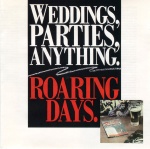 Weddings Parties Anything – Roaring Days (1988)
Weddings Parties Anything – Roaring Days (1988)
Not much known outside of Australia, Melbourne’s accordion-led Weddings Parties Anything was the Aussie equivalent of, say, The Pogues or The Men They Couldn’t Hang, an energetic and patriotic folk-rock band that drew stories from working-class Australia and from the history of the country. This long album doesn’t really have a bad track and is an unflinching journey into the heart of eighties Australia. The band knows how to rock, as evidenced by the title track and the political “Industrial Town”, but the band could be quite tender as well, as on the affectionate portrait of a town, “Brunswick“, and the wonderful acoustic song “Sisters of Mercy“. For a bonus, there’s a tribute to folk balladeer Tex Morton and a stomping version of Morton’s “Sergeant Small”. There’s also a really strong pop sensibility in this band’s writing that you don’t find so much in the English “folk-punk” bands. I really wish I hadn’t misplaced my copy of this…writing about it has reminded me to get another!
 Mark Seymour – Embedded (2004)
Mark Seymour – Embedded (2004)
If you’re a fan of Melbourne’s venerable Hunters and Collectors, this should appease you. I like the “Hunnas” a lot, but none of their albums entirely does it for me from track one through whatever, no matter how many great songs are on there (I still have all the albums, of course). Still, there are usually 5 or 6 amazing songs per album by the muscular but sensitive horn-driven collective. Remember “Throw Your Arms Around Me?” Now, lead singer Mark Seymour’s solo career is a slightly different story. This album and the next, Westgate, are two of the best roots singer-songwriter albums I’ve ever heard. Westgate is rootsier while this is poppier. And it’s a wonderful collection of super-melodic classic pop-rock that Crowded House fans should drool over. Seymour’s voice has improved as a solo artist to the point where I’d say it’s one of the most expressive and pleasant I’ve heard. This is not experimental music, it’s uplifting, heart-warming but thought-provoking. I present as evidence the mournful “Paradise Downunder” and “Waratah Street“, and the intensity of “Left Alive” and “Show Me Love”. There appears to be a loose theme about the disconnectness of suburban living, which believe me, we can identify with here. I grew up in such a place. Embedded is like a warm blanket I like to throw on periodically, and I’ve had the pleasure of seeing Seymour’s fine live act a couple of times. A top talent who deserves more listeners than he has, all over the world.
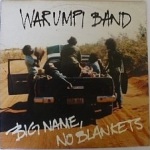 Warumpi Band – Big Name, No Blankets (1985)
Warumpi Band – Big Name, No Blankets (1985)
Best known to many for being in a documentary with Midnight Oil, The Warumpi Band, formed in remote Papunya, were no slackers themselves, I can assure you. This band contained, inspiringly, both Aboriginal and white members, and many of the songs are in the indigenous language. While the album occasionally devolves into typical boogie woogie and there’s one unsuccessful dalliance with reggae, the majority of the album is a storming collection of basic, driving four-on-the-floor rock and roll, drums, bass, guitar and let’s go! The Aboriginal lyrics and vocal tones do lend an air of exoticism, but these are good tunes regardless. The driving “Waru” and “Warumpinya Papunyan” represent the band at its best. And the album contains the anthem of reconciliation, “Blackfella Whitefella“, which is essential listening for anyone who cares about these things. And you should. This album is not a curiosity, it’s a slice of the real-life outback brought right to your front door, and you shouldn’t miss it.
 Archie Roach – Charcoal Lane (1990)
Archie Roach – Charcoal Lane (1990)
Charcoal Lane is an important album, for it seems the Aboriginal community had never had a voice like Roach’s to express its outrage and sorrow. And what a voice! One of the sweetest country-folk voices you’ll ever hear. They should have sent Aaron Neville to study with this guy. And the songs! It’s like Roach was born with a magical ability to sum up all of his people’s suffering (of which he has had his share) and make it clearly understandable for those of us who couldn’t possibly comprehend what they have been put through. There are so many sad gems on here, from the heartbreaking “Took the Children Away” (they took Canadian Native children away too, and what incredible damage it did), to the tragedy of “Munjana” (one woman’s life of oppression examined in tragic detail), and the deceptive sweetness of “Native Born”. But Roach doesn’t just do issues well. “Summer of My Life”, expressing the loneliness and memories of a recently widowed woman, possibly breaks my heart more than anything I’ve ever heard. And all of this with tastefully sparse production, letting the voice express everything. What a great album.
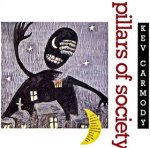 Kev Carmody – Pillars of Society (1988)
Kev Carmody – Pillars of Society (1988)
Carmody, another Aboriginal folkie, is sort of the far-left complement to Roach’s humanism. While Roach is expert in sorrow and uplift, Carmody’s pen and tongue are sharp. He wants you to know exactly why his people are so fucked up and why the world is so fucked up in general. He points his finger angrily but he points it in just the right directions. And his sardonic vocal tone is a perfect vehicle for this uncompromising truth-telling. Witness “Pillars of Society”, wherein he lays out the stupidity of capitalism in a rather matter-of-fact manner, as though it’s self-evident. Which it is. Other wrenchingly honest tracks are “Thou Shalt Not Steal“, one of the best songs about the White occupation I’ve ever heard, the poem “Comrade Jesus Christ”, a new version of the sorts of sentiments expressed by Leon Rosselson in “Stand Up for Judas” many decades ago (in fact, in some ways Carmody is the Aborigine Rosselson), and the vitriolic “White Bourgeois Woman”. If you like activist music like classic Billy Bragg and Phil Ochs, Carmody will be a revelation for you.
 Powerfinger – Vulture Street (2003)
Powerfinger – Vulture Street (2003)
As I implied earlier, if this is your top-40 rock in Oz, you have no idea how lucky you are. Truly. For what we have here is five likeable blokes kicking out some delightful old-skool rock ‘n roll. Powderfinger’s earlier albums were a little too Pixies-ish college rock for me, but on this album they really found their footing in a set of bitchin’ Stonesy/Hooply/Facesey boogie woogie woogie. I’ll take it over the Black Crowes any day, even though Powderfinger plays it a little safer than the average sloppy rock ‘n roll band. Ian Haug and Darren Middleton’s amps sound cranked to 12, Bernard Fanning discovers his Southern rock singin’ mojo, and the tunes are just plain fun. Witness the skittery Keith Moonish drumming and mountain-size riffing of “(Baby I’ve Got You) on My Mind“, the big-ass chorus dynamic (and Jimmy Page-style solo) on “Love Your Way“, and the exultant stomp of “Sunsets” and “Stumblin'”. A great album to rock with on a sunny afternoon. So if you’re an indie hipster full of disdain for the Finger, give your head a shake. For the record, the band’s last album, Golden Rule, is their best, but this is too much of a good time not to recommend.
 The Boys Next Door – Door, Door (1979)
The Boys Next Door – Door, Door (1979)
Aussies did do punk, and I’m shamed to say I don’t know The Saints’ discography, which I’ve heard great things about, well enough to detail anything here. But before he became sort of a Goth god and sometime novelist, young Nick Cave and The Birthday Party were this bitchin’ punk/post-punk band. I’m sure he’d read this and wonder why I’m not highlighting one of his many other fine albums with The Bad Seeds and The Birthday Party, but I just think this album should be heard more. This is not nasty “oi” punk; it belongs more on your playlist with The Buzzcocks and The Damned, but it’s a super-rockin’ collection of short, melodic punk nuggets. Listen to “The Nightwatchman” to hear what I mean. The album progresses as expected, but at the end we get the gloriously juvenile “Shivers“, a long, mournful, and hyper-dramatic ballad with sentiments so very despondent that they make noted moper Morrissey sound like Kool and the Gang. A great way to spend 4.5 minutes, I assure you. Cave is indeed a major talent, and these are his roots. What fun roots they are!
 Ups & Downs – Sleepless (1986)
Ups & Downs – Sleepless (1986)
I bet you haven’t heard of Brisbane’s Ups & Downs, but now you have. An early eighties pop/neo-psych band led by the Atkinson brothers, Ups & Downs ploughed the same furrows as early Church, Echo and the Bunnymen and The Psychedelic Furs, cinematically dramatic songs with chiming neo-Byrdsy guitars and soaring choruses. And it’s some of the best of that sort of music I’ve heard — these tunes are epic. Put them in the “should have made it” bin with other great bands like Ireland’s Cactus World News … it’s hard to believe this stuff didn’t go big when you listen to alternate-reality hits like “The Living Kind“, the Diamond cover “Solitary Man” and “Hearts”, with its ecstatic guitar crescendos. And Greg Atkinson has a wonderful voice. The band’s best song, “Moments Away”, isn’t on this album, but if you can find this and you like great melodic rock/dream pop/what have you, you simply must have it.


No Paul Kelly!? I’m speechless.
LikeLike
Forgive me, Paul. Hence the disclaimer. Not THE list, just A list. I like Paul a lot though. Perhaps a part II is in order soon. It’ll give me time to learn properly about The Saints!
LikeLike
Forgive me Bruce that is. It’s early here.
LikeLike
No prob. It’s a good selection of artists and albums with some worthwhile discoveries and many cool insights. Loved the Triffids piece.
Sent from my BlackBerry device on the Rogers Wireless Network
LikeLike
You show remarkable insight into the aussie scene and these selections are very good. Love the Ups and Downs – in the same vein look for the Moffs !
LikeLike
Thanks! And I will!
LikeLike
Ups and Downs, nice addition. Are you into his later stuff as Big Heavy Stuff? I’m a big fan of their last two albums, Dear Friends and Enemies and especially Size of the Ocean, which I highly recommend to you due to your apparent taste, if you are not already familiar with it.
LikeLike
I am not familiar- that band was not well known here and the records weren’t east to get.
I will look them up, thanks!
LikeLike